CLIMATE CHANGE AND PUBLIC HEALTH: EMERGING INFECTIOUS DISEASES IN A WARMING WORLD
HOME
BLOG
CLIMATE CHANGE AND PUBLIC HEALTH: EMERGING INFECTIOUS DISEASES IN A WARMING WORLD
Climate change is no longer a distant threat—it is happening now, and its effects on public health are becoming more apparent. One of the most concerning consequences is the rise of emerging infectious diseases (EIDs). As global temperatures increase, pathogens, vectors, and hosts are shifting, leading to new outbreaks in previously unaffected areas. This article explores the link between climate change and infectious diseases, highlighting the risks, mechanisms, and strategies to mitigate the impact.
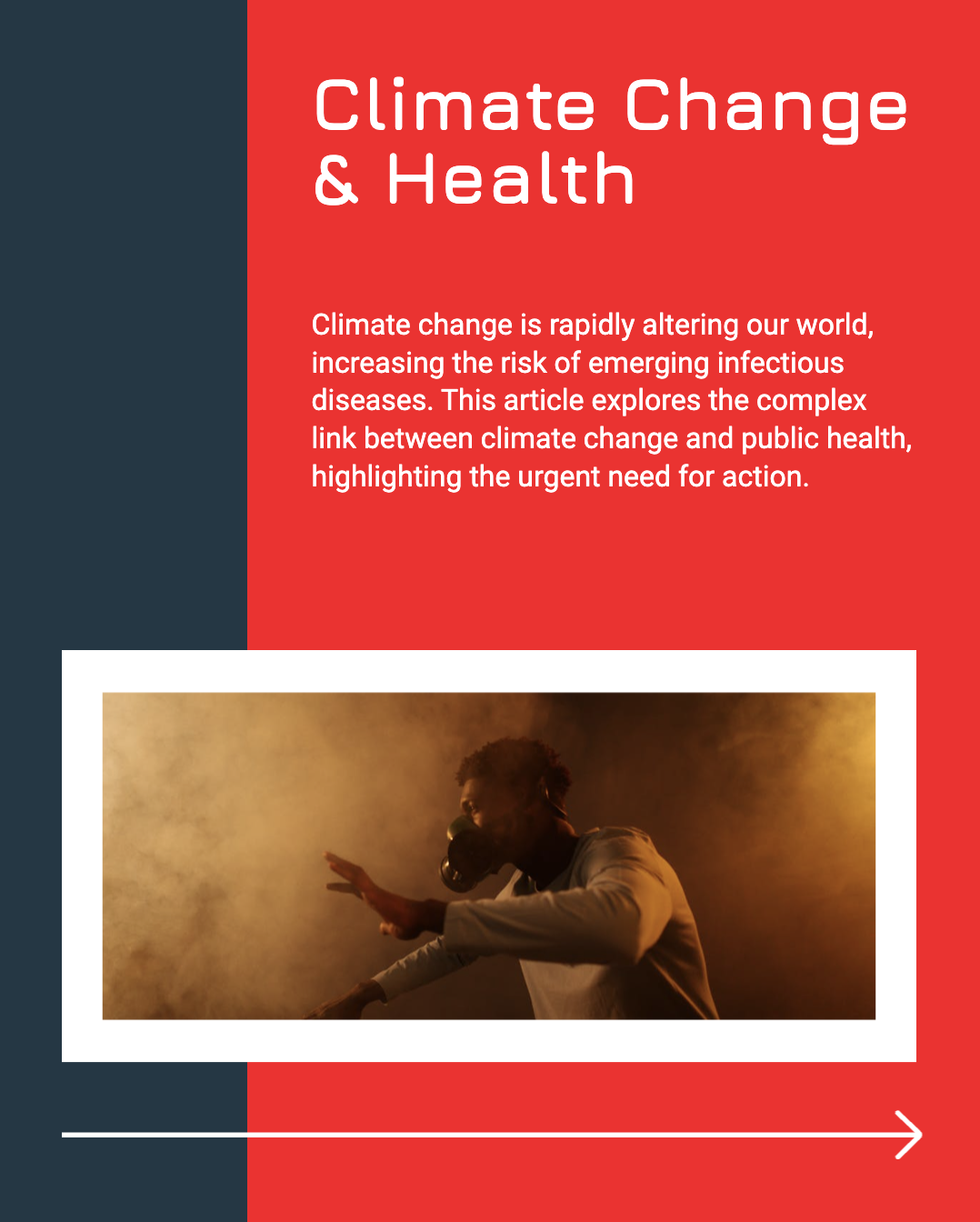
How Climate Change Fuels the Spread of Infectious Diseases
Climate change affects infectious diseases in several ways. Rising temperatures, changes in precipitation patterns, and extreme weather events all contribute to the spread and emergence of new diseases. Here’s how:
1. Rising Temperatures and Disease Expansion
Warmer temperatures create a more favorable environment for disease-carrying vectors such as mosquitoes and ticks. Some of the effects include:
- Increased mosquito activity: Mosquito-borne diseases like malaria, dengue, and Zika virus are spreading to higher altitudes and latitudes.
- Extended tick survival: Lyme disease, carried by ticks, is expanding in North America and Europe as ticks thrive in warmer conditions.
2. Changes in Rainfall Patterns
Shifts in rainfall patterns create ideal breeding conditions for vectors:
- Increased flooding: Stagnant water pools provide perfect mosquito breeding grounds, leading to surges in malaria and dengue fever.
- Droughts: Water scarcity forces populations to store water, inadvertently increasing mosquito breeding habitats in household containers.
3. Extreme Weather Events and Disease Outbreaks
Climate change is driving more frequent and intense hurricanes, typhoons, and floods, which increase the risk of waterborne and vector-borne diseases:
- Hurricane-related cholera outbreaks due to contaminated water sources.
- Flooding-linked leptospirosis, a bacterial infection spread through water contaminated with animal urine.
4. Melting Permafrost and Ancient Pathogens
As Arctic permafrost thaws due to rising global temperatures, ancient viruses and bacteria that have been dormant for thousands of years are being exposed. There is evidence that:
- Anthrax outbreaks in Siberia have been linked to thawing carcasses infected with the bacteria.
- Unknown prehistoric pathogens could resurface, posing unpredictable risks.
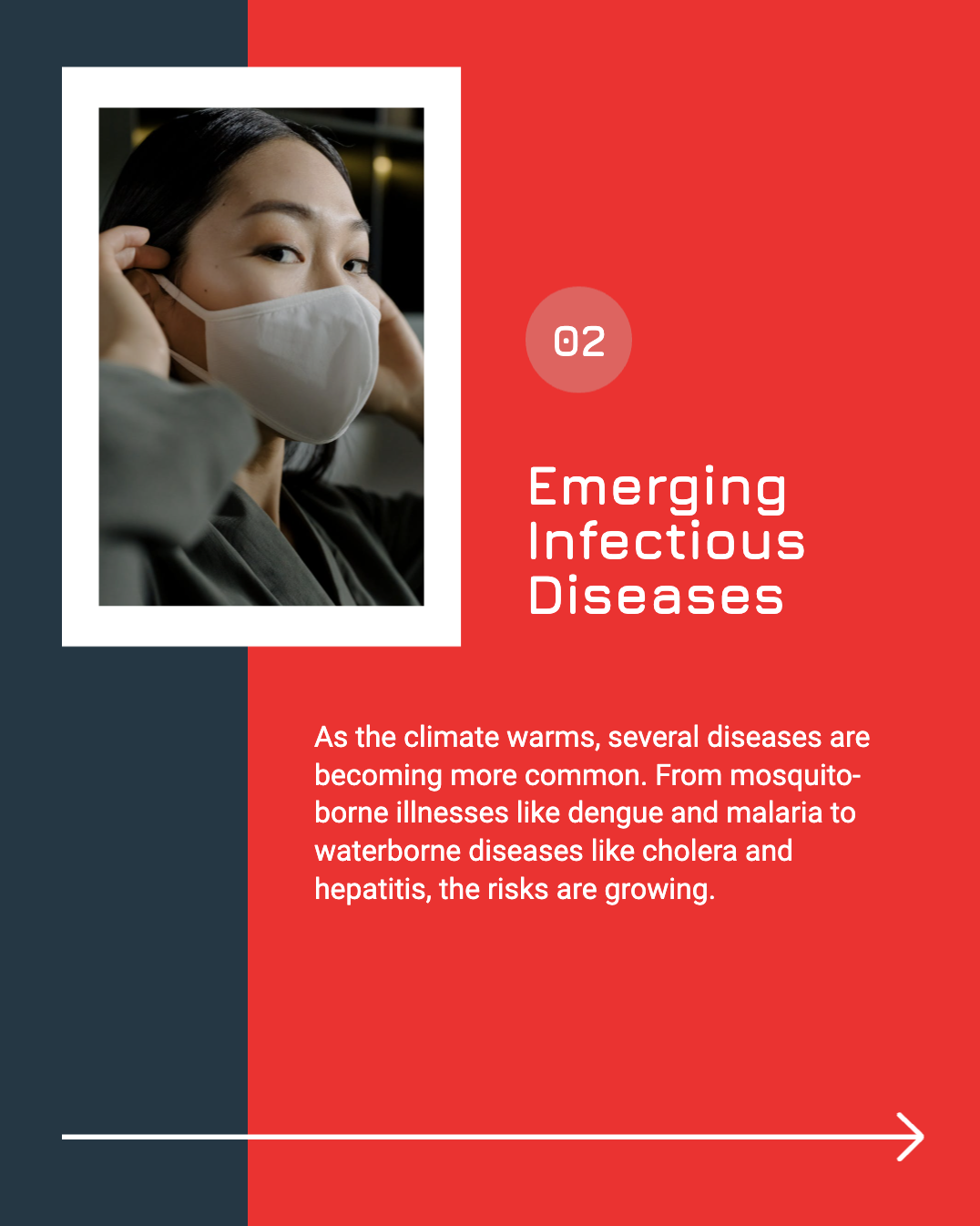
Notable Emerging Infectious Diseases Linked to Climate Change
Several diseases are emerging or expanding due to climate-related factors:
1. Malaria and Dengue Fever
- Higher temperatures and altered precipitation patterns allow mosquito species (Anopheles and Aedes) to invade new territories.
- Warmer winters mean mosquitoes survive year-round, leading to more frequent outbreaks.
2. Zika Virus
- Zika is spreading to previously unaffected areas due to changing climate conditions.
- The virus has severe implications, including birth defects such as microcephaly in newborns.
3. Lyme Disease
- Warmer winters allow ticks to thrive in North America and Europe, leading to a rise in Lyme disease cases.
- Tick populations are shifting northward, affecting communities previously unaffected by the disease.
4. Cholera
- Rising sea surface temperatures are linked to increased cholera outbreaks in coastal regions.
- Heavy rainfall and flooding contribute to cholera outbreaks by contaminating drinking water supplies.
5. Nipah Virus
- Climate-driven habitat destruction forces bats—the primary reservoirs of the Nipah virus—closer to human settlements, increasing spillover events.
- Deforestation and agricultural expansion create more human-animal interactions, raising the risk of transmission.
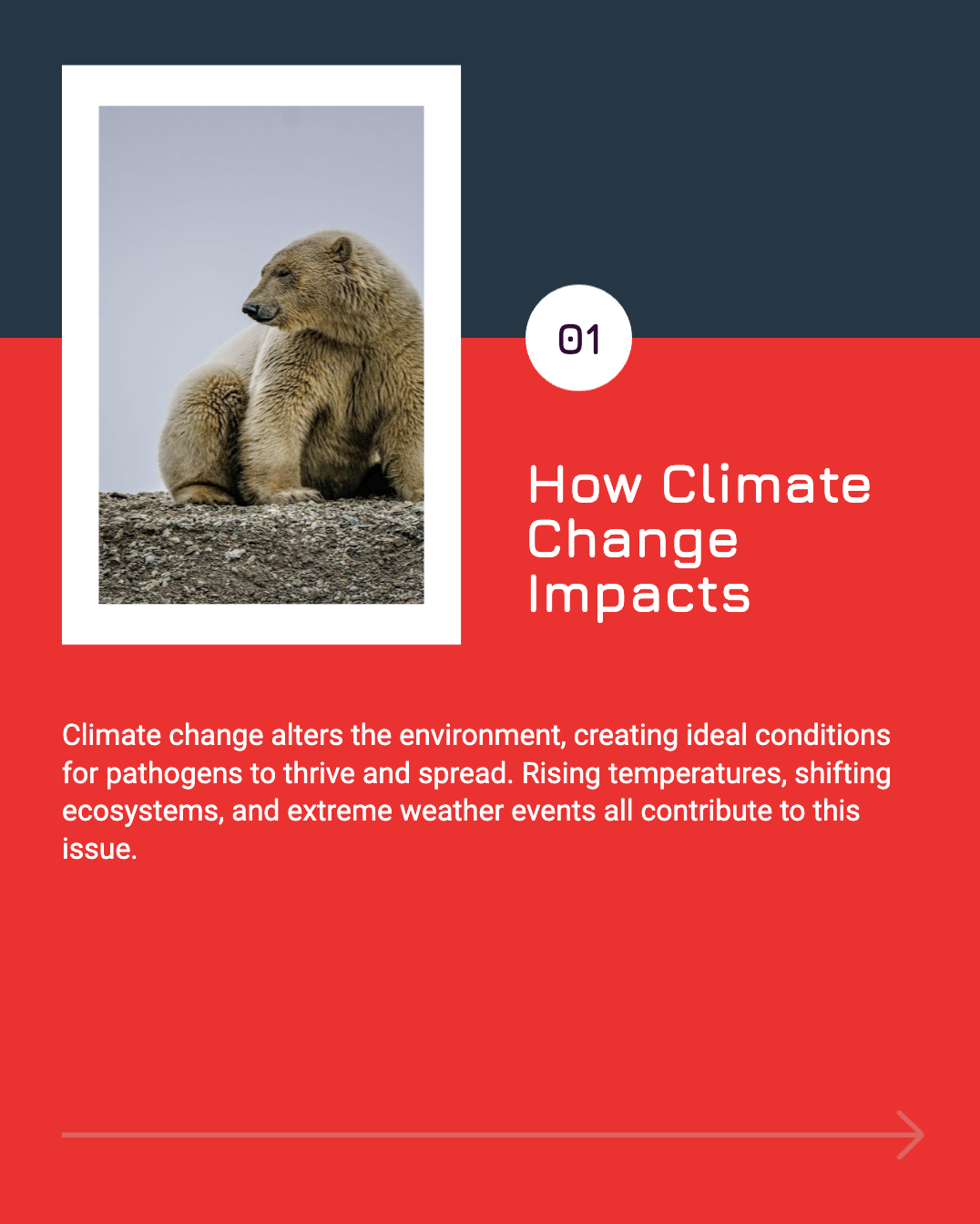
How Climate Change Affects Disease Control Efforts
The worsening impact of climate change is challenging existing public health strategies to control infectious diseases. Some key challenges include:
1. Expanding Disease Frontiers
- Diseases that were once limited to tropical areas are now appearing in temperate regions.
- Healthcare systems in non-endemic areas are unprepared, leading to increased mortality.
2. Antibiotic Resistance
- Warmer temperatures contribute to the evolution of antibiotic-resistant bacteria.
- Flooding and pollution increase antibiotic contamination in water sources, further exacerbating the problem.
3. Strain on Healthcare Systems
- More frequent disease outbreaks put additional pressure on hospitals and healthcare workers.
- Limited resources in developing countries make climate-related health crises harder to manage.
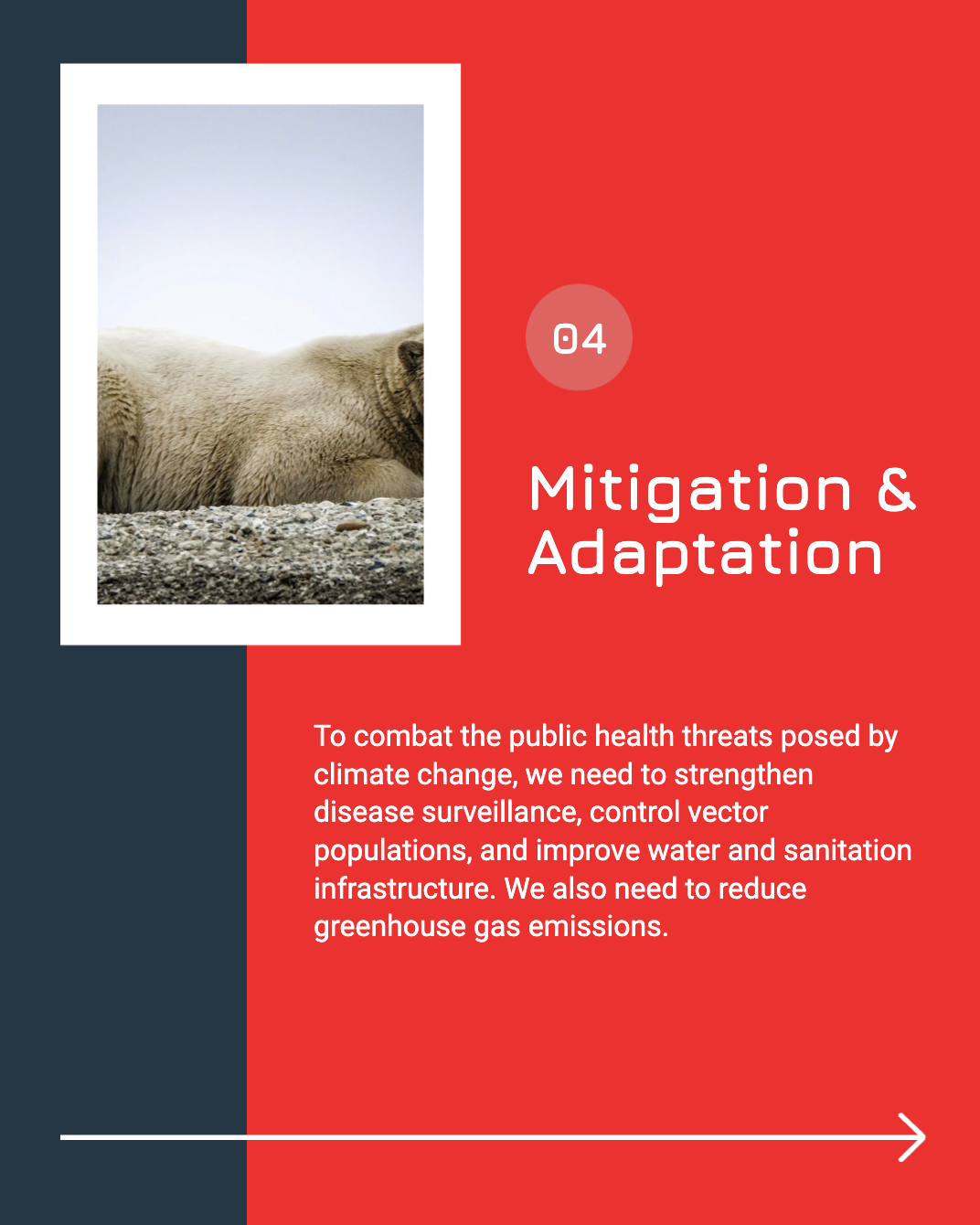
Strategies to Mitigate Climate-Driven Disease Risks
While climate change poses significant threats to public health, proactive measures can help mitigate its effects. Here are some key strategies:
1. Strengthening Surveillance and Early Warning Systems
- Real-time monitoring of climate-sensitive diseases can help predict outbreaks.
- Artificial intelligence (AI) and big data are being used to track disease trends and anticipate risks.
2. Investing in Climate-Resilient Healthcare Infrastructure
- Hospitals and clinics should be equipped to handle climate-related disease outbreaks.
- Strengthening vector control programs and vaccination campaigns can help prevent disease spread.
3. Addressing Root Causes of Climate Change
- Reducing greenhouse gas emissions will slow down climate change and its impact on health.
- Shifting to renewable energy sources and promoting sustainable agriculture can help curb disease outbreaks.
4. Expanding Global Collaboration
- International organizations, governments, and researchers must work together to tackle emerging infectious diseases.
- Strengthening global public health networks ensures faster responses to outbreaks.
Future Outlook: Are We Prepared?
As climate change accelerates, the risk of emerging infectious diseases will only increase. The global health community must prioritize climate adaptation measures to prevent future pandemics. Governments, researchers, and individuals must work together to mitigate climate-driven disease risks.
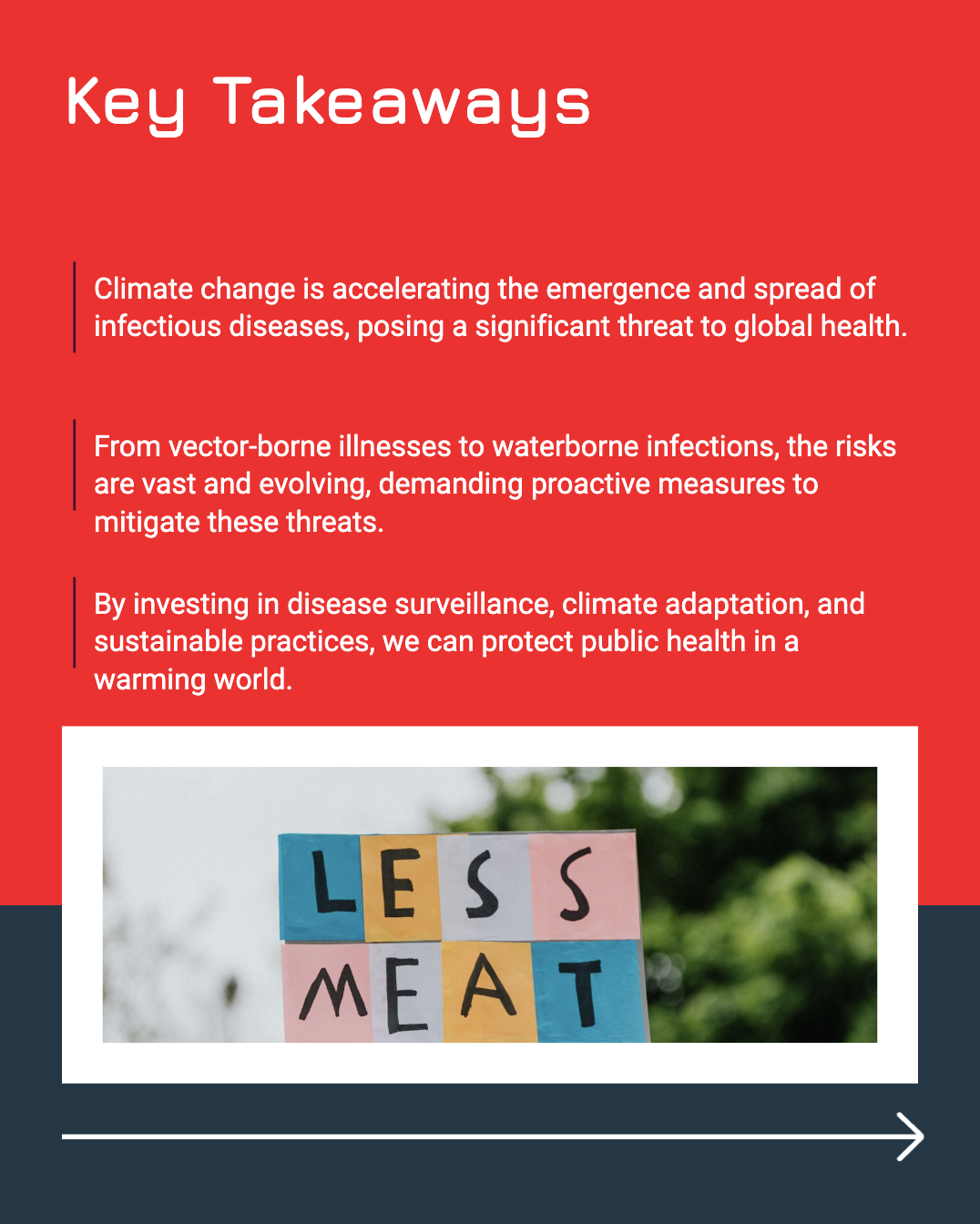
Key Takeaways
Climate change is reshaping the landscape of infectious diseases, posing significant threats to global health. Warmer temperatures, altered precipitation patterns, and extreme weather events are fueling the rise of emerging diseases. While the challenges are immense, proactive measures such as early warning systems, climate-resilient healthcare, and global collaboration can help curb the impact. The time to act is now—protecting public health requires urgent climate action.
FAQs
- How does climate change contribute to the spread of infectious diseases?
Climate change alters temperature, rainfall, and extreme weather patterns, creating favorable conditions for vectors and pathogens to thrive. This leads to the spread of diseases such as malaria, dengue, and Lyme disease.
- Which diseases are most affected by climate change?
Diseases most affected include malaria, dengue fever, Lyme disease, Zika virus, cholera, and Nipah virus. Many of these diseases are spreading to new geographic areas due to climate shifts.
- How can individuals protect themselves from climate-driven diseases?
People can protect themselves by:
- Using mosquito repellents and nets to prevent vector-borne infections.
- Ensuring proper sanitation and drinking clean water.
- Staying informed about emerging disease risks in their region.
- What role does deforestation play in the emergence of new diseases?
Deforestation forces wildlife, such as bats and rodents, into closer contact with humans. This increases the risk of zoonotic spillover, where diseases jump from animals to humans, as seen with Nipah virus and Ebola.
- Can we reverse the effects of climate change on infectious diseases?
While reversing climate change is challenging, mitigating greenhouse gas emissions and improving disease monitoring can slow down its impact. Investing in climate-resilient healthcare and vector control strategies will help reduce future risks.
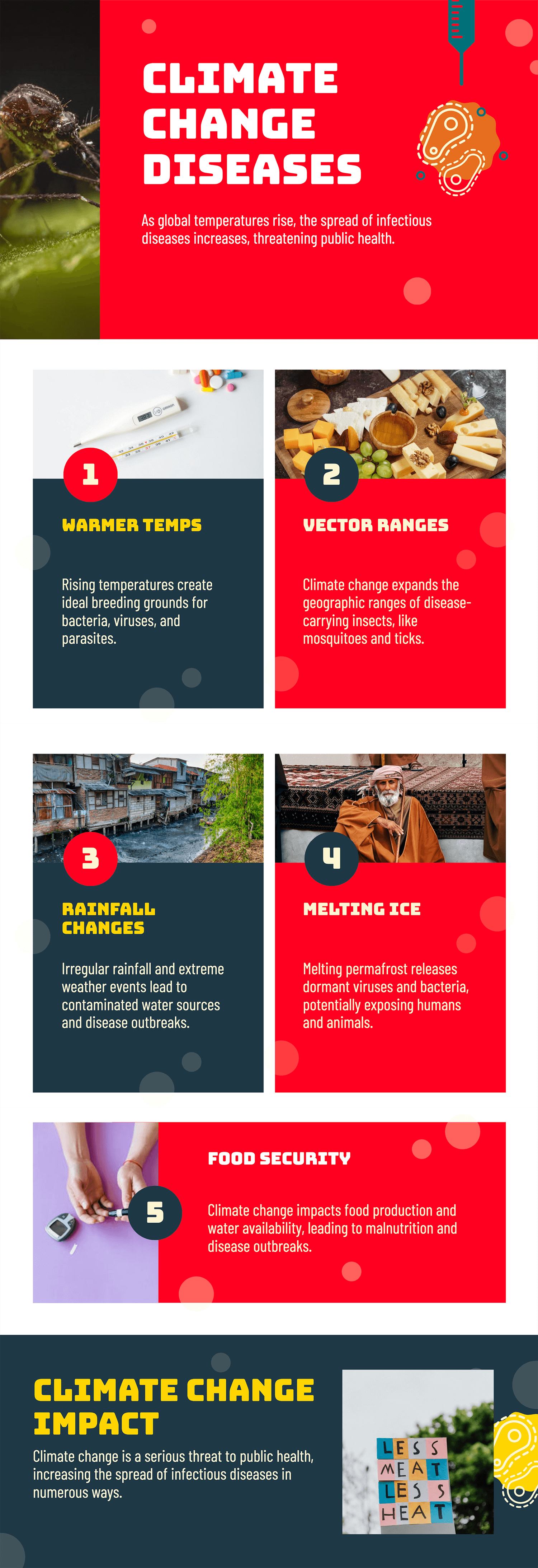 21.01.2025
21.01.2025





 21.01.2025
21.01.2025